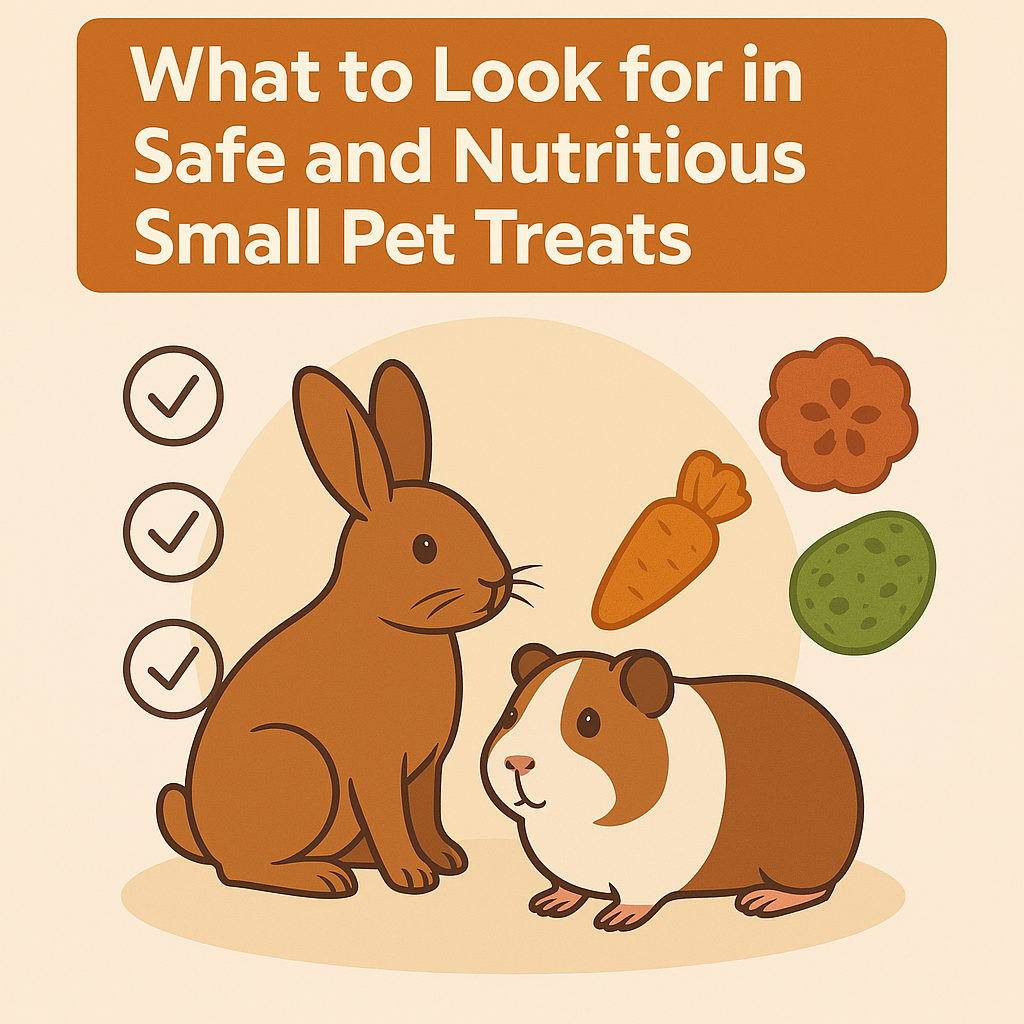Physical Address
304 North Cardinal St.
Dorchester Center, MA 02124
Physical Address
304 North Cardinal St.
Dorchester Center, MA 02124


A treat might seem like a small gesture, but to your furry companion, it can be a moment of joy, encouragement, or even comfort. For small animals like rabbits, guinea pigs, hamsters, and rats, treats play a surprisingly important role — not just for bonding or training but for enrichment and nutrition.
But not all treats are created equal. In a growing pet product market, many options labeled for small pets may contain added sugars, dyes, and other fillers that offer little benefit and even pose harm.
That’s why it’s so important to know what you’re giving your pet — and why. This post will help you navigate the world of small animal treats, explaining how to choose safe, healthy options and avoid the most common pitfalls. We’ll also explore treat types for different species, how to use them responsibly, and how to integrate them into your pet’s daily routine.
Whether you’re shopping in-store or online for treats for small animal companions, this guide is your roadmap to smarter, safer treat time.
Before we talk about ingredients or feeding habits, let’s look at the “why” behind treats.
However, treats are not replacements for a complete diet. They should be used as supplements to hay, pellets, and fresh produce — not as a primary source of food. And like with all good things, moderation is key.
Treats should align with the natural dietary needs of your pet. Different species have different nutritional priorities.
When shopping for treats for small animal diets, it’s best to opt for species-specific formulations to ensure the right balance of nutrients.
Just like in human food, the ingredients list tells the real story. Good treats are made with natural, whole-food ingredients.
Fiber is a big one. A treat with high fiber and low sugar is much more aligned with a small animal’s natural diet.
Not all ingredients that appeal to humans are safe for animals. Some are even toxic or lead to serious health issues when consumed over time.
Also, avoid treats marketed as “all animal” or “universal” — these often lack the specific nutrients your pet needs and may contain harmful additives.
We know it’s tempting to spoil your pet with treats, especially when they beg with those adorable eyes or excited squeaks. But too many treats can cause:
If your pet is a slow eater or becomes picky, try scaling back on treats for a while and reintroducing them with stricter limits.
The right type of treat depends on your pet’s species, size, and chewing habits. Here’s a quick breakdown:
Look for small animal treats specifically made for your pet’s species, and avoid general mixes that lump all small animals together.
Treats can be more than food — they can be tools for mental stimulation and physical engagement.
These toys turn treat time into playtime, helping pets stay active, reduce stress, and fight off cage boredom.
When browsing treats for small animal play, look for products that combine fun with nutrition.
Want to go the homemade route? It’s doable — but there are precautions.
Homemade treats can be great — but always introduce new ones slowly and monitor your pet’s reaction.
Pet food marketing can be tricky, and flashy packaging doesn’t always mean quality.
When in doubt, consult your vet or a trusted pet nutritionist. Your pet’s health is worth a little extra research.
Investing in reliable small animal treats ensures every nibble is a step toward better health — not just a quick thrill.
1. How often should I give my small pet a treat?
Limit treats to 1–2 small servings per day and make sure they don’t exceed 10% of your pet’s total food intake.
2. Are fruit treats okay for rabbits or guinea pigs?
Yes, but in moderation. Stick to small pieces of low-sugar fruit like apple or blueberry once or twice a week.
3. Can I give dog or cat treats to my small animal?
No. These are formulated for different dietary needs and can be harmful to small animals. Always use species-specific treats.
4. What’s the safest treat for a picky eater?
Try natural options like dried herbs, hay-based chews, or vegetable-based snacks without added sugar or salt.
5. Are homemade treats healthier than store-bought?
They can be, but it depends on ingredients and preparation. Ensure they meet your pet’s nutritional needs and are free from harmful additives.
Choosing the right small animal treats isn’t about spoiling your pet — it’s about giving them something that supports their natural instincts, keeps them engaged, and contributes to their overall wellness. When used wisely, treats are tools for bonding, training, enrichment, and joy.
With so many options available, taking the time to read labels, understand ingredients, and shop species-specifically makes a major difference. Avoid gimmicky, sugar-loaded snacks and look for treats for small animal companions that reflect their real needs — not just what looks good on the shelf.
Because when you treat them right, they thrive — and isn’t that the goal of every great pet parent?